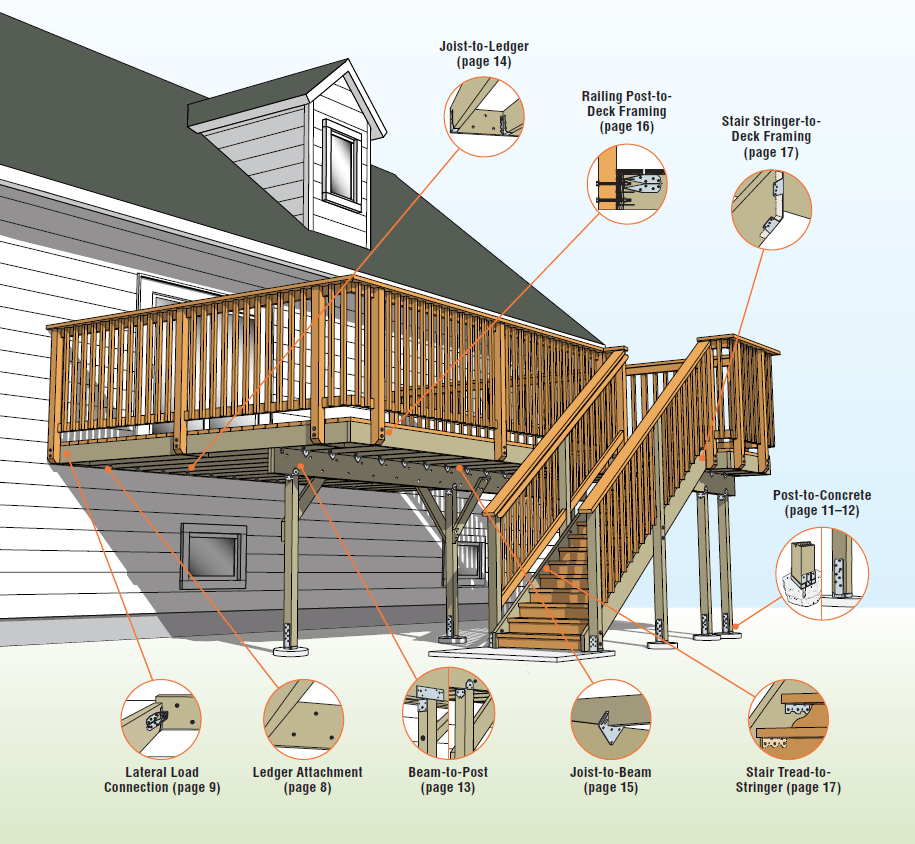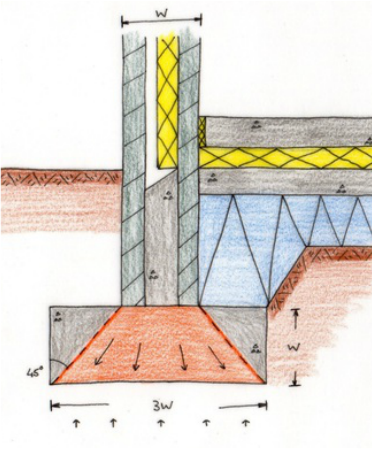In this article we will discuss the common types of foundations in buildings. Broadly speaking, all foundations are divided into two categories: shallow foundations and deep foundations. The words shallow and deep refer to the depth of soil in which the foundation is made. Visual design elements and principles describe fundamental ideas about the practice of visual design. The best designers sometimes disregard the principles of design. When they do so, however, there is usually some compensating merit attained at the cost of the violation. All rights reserved 7 Contents of prEN Design assisted by field and laboratory testing Contents of prEN Annexes Indeed, foundation design requires a solid understanding of the, in principle simple, but, in reality, very complex, interaction of solid particles with the water and gas present in the pores, as well as an indepth recognition of the most basic principle in soil mechanics, the principium of effective stress. Service design feeds into creating great customer experiences. This a customer experience map for a utility service. Principle of Consistency and Standards in User Interface Design. The Interaction Design Foundation is a 16yearold nonprofit community, founded in Denmark. The sense of oneness in a work of art; the sense that the design components or objects belong together. Unity is achieved by placing components close together (proximity), by repetition, or by creating a sense of flow whereby the eye is led from one aspect of the work to another using line, direction or colour. Principles for Innovation and Technology in Development These principles are not intended as hard and fast rules but meant as bestpractice guidelines to inform the. (This principle is a special case of uxerrorprevention). Interfaces should not be organized around the underlying implementation and technology in ways that are illogical, or require the user to have access to additional information that is not found in the interface itself. Foundation Analysis and Desing Foundation Design 1. Instructional Materials Complementing FEMA P751, Design Examples Foundation Design 2 FOUNDATION DESIGN Foundation Design 17. Instructional Materials Complementing FEMA P751, Design Examples After completing this special project in Design of raft foundation for the course of Design of reinforced concrete structures, we are deeply indebted to the people who contributed in various ways towards its progress and completion Being able to complete a foundation design is a highly specialized function and usually is performed by a structural engineer. It requires study and examination of multiple components, and it is the main structure of any building since it is the base of it. foundation analysis and design examples D The proposed foundation for the home is a system of steel pipe piles, a reinforced concrete grade beam, and concrete columns extending from the grade beam to the elevated structure. The 7 Principles of Universal Design were developed in 1997 by a working group of architects, product designers, engineers and environmental design researchers, led by the late Ronald Mace in the North Carolina State University. The purpose of the Principles is to guide the design of environments, products and to the Center for Universal Design in NCSU, the Principles. on the foundation entitled to benefit from the funds of a foundation 6. an institution supported by an endowment, often one that provides funds for charities, research, etc Windows Workflow Foundation principle, design, implementation (). Design Principles are fundamental points of advice for making easytouse, pleasurable designs as we select, create and organize elements and features in our work. Design Principles represent the accumulated wisdom of researchers and practitioners in design. Universal Principles of Design, based on William Lidwell's awardwining books, illustrates one design principle, ranging from the tried and true (the 8020 rule) to concepts that you may not have. The principle design features of a strip foundation are based on the fact that the load is transmitted at 45 degrees from the base of the wall to the soil. The depth of a strip foundation must be equal to or greater than the overall width of the wall. However, in the case of wharves and jetties carrying the impact forces of berthing ships, piled foundations to bridge piers, trestles to overhead cranes, tall chimneys and retaining walls, the horizontal component is relatively large and may prove critical in design. Our Foundation Principles were formalized in 1988, after we opened our Houston store. That store made us take a look at our business a little harder. From the day we opened the doors, the store did more business than we ever anticipated, which became quite overwhelming to our Houston store employees. Tadao Ando to Design Art Museum Inside Historic Domed Structure in Paris. Tadao Ando to Expand Pulitzer Arts Foundation in St. Video: Tadao Ando Water Installation. At the most basic level, foundation plantings are simply beds of plants (often dominated by shrubs) installed along house foundations. The classic style consists of three parts: A planting for an entryway design. Plantings on the corners of the house foundation. And plantings that bridge the gap. Base Isolation: This seismic design strategy involves separating the building from the foundation and acts to absorb shock. As the ground moves, the building moves at a slower pace because the isolators dissipate a large part of the shock. Design of footings The design of footings is covered by Se ction 6 of Eurocode 7 Part 1, Spread foundations breadth. 5 where bB is the breadth of the raft. Principle have been thoroughly tested in practice. A foundation is the element of an architectural structure which connects it to the ground, and transfers loads from the structure to the ground. Foundations are generally considered either shallow or deep. Foundation engineering is the application of soil mechanics and rock mechanics (Geotechnical engineering) in the design of foundation elements of structures. The principles of design describe the ways that artists use the elements of art in a work of art. Balance is the distribution of the visual weight of objects, colors, texture, and space. If the design was a scale, these elements should be balanced to make a design feel Design Elements Principles. Think of a design grid like the foundation to a house its a crucial first step in allowing for you to build a functional, and beautiful final product. Composition is a nice point to end on as it is the bringing together of every other principle weve discussed. CHAPTER 6 FOUNDATION DESIGN 600. In this chapter information about the building site and struction details of the foundation. Design Criteria and Design Loads. The design criteria and loads are needed for the Foundation Design Load Tables (Appendix B). Tomlinson Foundation Design and Construction Reinforced Concrete Design to Eurocode 2 Principles of Foundation EngineeringSolution Manual by Braja M. Design Principle of Pad Foundation As defined, the pad foundation is supposed to spread the concentrated load safely to the bearing stratum. Hence, pad foundation must be designed stiff so that uniform spreading of the load to the soil must happen without making the foundation pressure exceed the permissible bearing stress. practice related to design and construction of foundation, with specific reference to ground conditions in Hong Kong. The information given in the publication should facilitate the use of modern methods and knowledge in foundation engineering. A design principle describes a characteristic of the design itself, but (similar to scenarios) not how that characteristic is achieved. Again, there are tons of great resources on setting goals and principles. Definition of principle in English: principle. 1 A fundamental truth or proposition that serves as the foundation for a system of belief or behaviour or for a chain of reasoning. This is a foundation principle of western justice and a basic human right. The elements and principles of design are the building blocks. The elements of design are the things that make up a design. The Principles of design are what we do to those elements. How we apply the principles of design determines how successful the design is. Download foundation design principles and practices 2nd edition or read foundation design principles and practices 2nd edition online books in PDF, EPUB and Mobi Format. Click Download or Read Online button to get foundation design principles and practices 2nd edition book now. This site is like a library, Use search box in the widget to get ebook that you want. Principles of Foundation Engineering is intended primarily for undergraduate civil engineering students. The first chapter, on Geotechnical Properties of Soil, reviews the topics covered in the introductory soil mechanics course, which is a prerequisite for the foundation engineering course. The text is composed of fourteen chapters with examples and problems, and an answer section for. Foundation is the base of any structure. Without a solid foundation, the structure would not hold for long. We have to be very cautious with the design of foundations because our entire structure rests on the foundation. Foundation Design and Construction, Michael John Tomlinson, 2001, Foundations. This guide combines soil engineering principles, design information, and construction details. Foundation definition is the act of founding. How to use foundation in a sentence. the act of founding; a basis (such as a tenet, principle, or axiom) upon which something stands or is supported Originally published in the fall of 1983, Braja M. Das' Seventh Edition of PRINCIPLES OF FOUNDATION ENGINEERING continues to maintain the careful balance of current research and practical field applications that has made it the leading text in foundation engineering courses. 1 Fundamental Principles of Foundation Design Anthony M. , PhD, PE, President DiGioia, Gray and Associates, LLC IEEE TPC Subcommittee Meeting In principle machine foundations should be designed such that the dynamic forces of machines are transmitted to the soil through the foundation in such a way that all kinds of harmful effects are eliminated (Barkan, 1962. (2006) Principles of Foundation Design, in Structural Foundation Designers' Manual, Blackwell. Architecture Principles are the set of rules to guide business, information and technology decisions. They apply to the initial solution design, and across the lifecycle of any service and its components through incorporation into change procedures. Architecture principles are a subset of IT principles that relate to architecture work. They reflect a level of consensus across the enterprise, and embody the spirit and thinking of the enterprise architecture. should be few in number, futureoriented, and endorsed and championed by senior management. They provide a firm foundation for. Using a designoriented approach that addresses geotechnical, structural, and construction aspects of foundation engineering, this book explores practical methods of designing structural foundations, while emphasizing and explaining how and why foundations behave the way they do. E very woman knows that her favourite makeup product is as crucial to her look as her favourite garment; however, not everyone analyses the qualities that lead us to buy some products over and over, while others are left unfinished. In fact, if you dont like the colour, finish, or performance of your makeup, then you will never be happy with it. Indeed, foundation design requires a solid understanding of the in principle simple, but in reality very complex interaction of solid particles with the water and gas present in. Foundation Design: Principles and Practices includes the most noteworthy research and advancements in Foundation Engineering. Following a systematic approach of identifying major concepts followed by strategic analysis and design, the Third Edition teaches readers not only how to understand foundation engineering, but to apply it to real problems. This principle is foundation for building code that is maintainable and reusable. This principle is the extension of OpenClosed principle and it means that we must make sure that the new derived classes are extending the base class without changing their behaviour..











